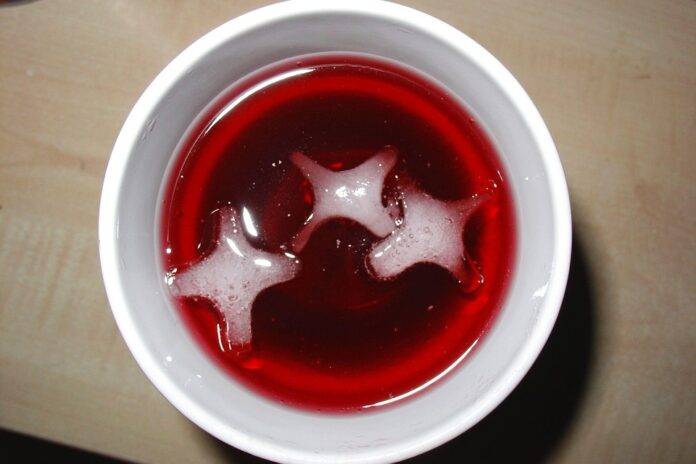Introduction
The beauty beverage market has been rapidly growing in recent years, with consumers increasingly seeking out products that not only provide hydration but also offer beauty benefits. As brands look to capitalize on this trend, it is essential for them to formulate effective and appealing beauty beverages that stand out in a crowded market. In this report, we will explore what brands must do to create successful beauty beverage products, taking into account industry insights, financial data, and best practices.
Understanding the Market
The beauty beverage market is a lucrative and competitive industry, with numerous players vying for consumer attention. According to market research firm Grand View Research, the global beauty drinks market was valued at $2.8 billion in 2020 and is expected to reach $4.4 billion by 2027, growing at a CAGR of 6.8% during the forecast period. This growth is driven by increasing consumer awareness of the link between nutrition and beauty, as well as the rise of social media influencers promoting beauty beverages as part of their skincare routines.
Consumer Preferences
Consumers are increasingly seeking out beauty beverages that offer a range of benefits, from hydration and anti-aging properties to skin brightening and acne prevention. Brands must take into account these preferences when formulating their products, ensuring that they deliver on their promised benefits and meet consumer expectations. Transparency in ingredients, sustainability practices, and ethical sourcing are also important factors that can influence consumer purchasing decisions.
Competitive Landscape
The beauty beverage market is crowded with both established brands and new entrants looking to carve out a niche for themselves. Companies like Vital Proteins, Dirty Lemon, and Hum Nutrition have gained popularity for their innovative beauty drink offerings, leveraging social media and influencer partnerships to reach a wider audience. To compete effectively, brands must differentiate themselves through unique formulations, packaging, and marketing strategies that resonate with their target consumers.
Formulating Effective Beauty Beverages
Creating a successful beauty beverage product requires a strategic approach that takes into account consumer preferences, market trends, and brand positioning. Here are some key steps that brands must follow to formulate effective and appealing beauty beverages:
Research and Development
Before launching a beauty beverage product, brands must invest in thorough research and development to understand the latest trends in skincare, nutrition, and beauty. This includes identifying key ingredients that have proven skincare benefits, such as collagen, hyaluronic acid, antioxidants, and vitamins. Formulations should be backed by scientific research and clinical studies to ensure efficacy and safety.
Ingredient Selection
The choice of ingredients plays a crucial role in the success of a beauty beverage product. Brands must select high-quality, natural ingredients that are known for their skincare benefits and appeal to health-conscious consumers. Organic, non-GMO, and sustainably sourced ingredients are increasingly in demand, reflecting a growing consumer preference for clean label products.
Flavor and Texture
In addition to skincare benefits, beauty beverages must also taste good and have a pleasant texture to encourage regular consumption. Brands should experiment with different flavors, such as fruit-infused, floral, or herbal blends, to cater to diverse consumer preferences. Texture is equally important, with consumers expecting a smooth, refreshing drinking experience that is easy to consume on the go.
Packaging and Branding
Packaging plays a key role in attracting consumers and communicating the brand’s identity. Beauty beverages should be packaged in eye-catching bottles or cans that convey a sense of luxury and sophistication. Labeling should highlight key ingredients, benefits, and any certifications or endorsements that add credibility to the product. Branding should be consistent across all marketing materials, from social media posts to influencer collaborations.
Marketing and Distribution Strategies
Once a beauty beverage product is formulated, brands must develop effective marketing and distribution strategies to reach their target audience and drive sales. Social media platforms like Instagram, TikTok, and YouTube are popular channels for promoting beauty beverages, as they allow brands to showcase their products visually and engage with consumers in real-time. Influencer marketing is also a powerful tool for reaching a wider audience and building brand awareness.
Retail Partnerships
In addition to direct-to-consumer sales, brands can partner with retail outlets, beauty stores, spas, and wellness centers to expand their distribution network and reach new customers. Collaborations with beauty influencers, celebrities, and wellness experts can help generate buzz and drive foot traffic to brick-and-mortar locations. Brands should also consider online marketplaces like Amazon, Sephora, and Ulta Beauty for increased visibility and sales opportunities.
Product Launches and Promotions
To generate excitement around a new beauty beverage product, brands can host product launches, pop-up events, and sampling programs to introduce it to consumers. Limited-edition releases, seasonal flavors, and exclusive collaborations can create a sense of urgency and exclusivity, driving sales and word-of-mouth marketing. Promotions like discounts, bundles, and loyalty programs can incentivize repeat purchases and build customer loyalty over time.
Conclusion
In conclusion, brands looking to formulate effective and appealing beauty beverages must take a strategic approach that combines research, innovation, and marketing savvy. By understanding consumer preferences, market trends, and competitive dynamics, brands can create products that resonate with their target audience and stand out in a crowded market. With the right ingredients, packaging, and branding, beauty beverage brands can capture the attention of health-conscious consumers and drive sales growth in a rapidly expanding industry.



